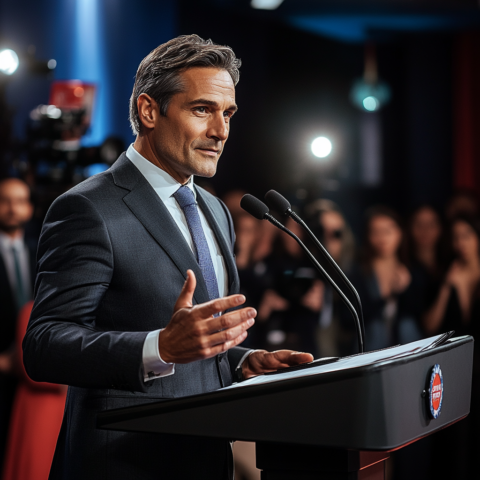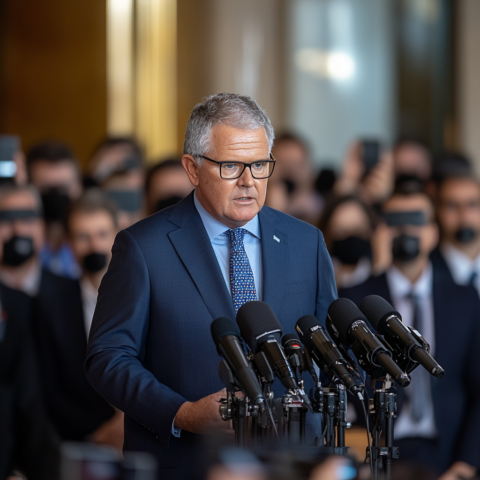In the realm of politics, communication is paramount. Clear, direct answers are often expected by the public, yet politicians frequently employ sophisticated techniques to dodge questions. These evasive maneuvers are not just strategic but also deeply rooted in psychological and communicative principles. This article explores the methods politicians use to avoid direct answers, drawing on academic research, expert opinions, and real-world examples to provide a comprehensive understanding of these tactics. By examining the effectiveness and impact of these techniques on public perception and trust, we aim to shed light on the broader implications for political communication and democratic discourse.
Historical Context and Background
 Question-dodging in politics is not a new phenomenon. Throughout history, politicians have artfully sidestepped direct answers to maintain their image, avoid controversy, or navigate complex issues. One famous example is Robert McNamara, who as Secretary of Defense during the Vietnam War, mastered the art of answering the question he wished he were asked rather than the one posed to him. This tactic, often referred to as the “artful dodge,” has been a staple in political communication, allowing speakers to control the narrative and steer the conversation towards more favorable terrain.
Question-dodging in politics is not a new phenomenon. Throughout history, politicians have artfully sidestepped direct answers to maintain their image, avoid controversy, or navigate complex issues. One famous example is Robert McNamara, who as Secretary of Defense during the Vietnam War, mastered the art of answering the question he wished he were asked rather than the one posed to him. This tactic, often referred to as the “artful dodge,” has been a staple in political communication, allowing speakers to control the narrative and steer the conversation towards more favorable terrain.
The Psychology Behind Dodging
Understanding why politicians dodge questions requires a look into the psychological underpinnings of human communication. People, including politicians, often avoid direct answers to protect their self-image, manage impressions, and prevent potential backlash. Psychological theories such as Gricean conversational norms, inattentional blindness, and impression management offer insights into these behaviors.
Gricean conversational norms suggest that listeners assume speakers will be cooperative and relevant, providing appropriate amounts of truthful information. When these norms are subtly violated, as in the case of a dodge, listeners may not immediately detect the evasion, especially if they are focused on social evaluation goals like assessing the likability or trustworthiness of the speaker rather than on the content of the answer itself.
Common Techniques Used by Politicians
- Bridging: Shifting the conversation to a related but more favorable topic. For example, when asked about rising unemployment rates, a politician might say, “That’s an important issue. Let me tell you about the new job creation programs we are implementing to address these concerns.” This shifts the focus from the negative aspect of unemployment to the positive action being taken.
- Deflecting: Diverting the question to another subject or individual. If a politician is asked about a recent scandal, they might respond, “While I understand the concern, what’s really important is our focus on economic recovery. Let’s talk about the steps we are taking to improve the economy.” Here, the politician avoids the scandal by redirecting attention to the economy.
- Generalizing: Offering vague responses that do not address specifics. When queried about a specific policy detail, a politician might respond, “We are committed to ensuring the best outcomes for all citizens.” This broad statement avoids delving into the specifics of the policy in question.
- Reframing: Changing the premise of the question to fit their narrative. For instance, if asked about failures in handling a pandemic, a politician might reframe it by saying, “This pandemic has shown the resilience and strength of our healthcare workers and communities.” This shifts the focus from failures to positive attributes.
- Using Jargon: Employing technical or complex language to obscure the answer. A politician asked about budget cuts might respond with, “The fiscal adjustments are necessary to align with the macroeconomic stabilization policies.” This jargon-heavy response can confuse the audience and detract from the clarity of the answer.
- Personal Attacks: Shifting the focus by attacking the questioner or their motives. If pressed about a controversial policy, a politician might say, “It’s disappointing that some media outlets choose to focus on divisive issues instead of the progress we are making.” This attack on the media diverts attention from the policy question.
- Anecdotes: Sharing personal stories or examples that are loosely related to the question can humanize the politician and deflect from the need for a direct response. When asked about education reform, a politician might respond, “I remember visiting a school where a young student told me how much they love their new classroom. It’s stories like these that drive our commitment to education.” This anecdote personalizes the issue but avoids specifics.
- Non-answer: Simply not answering the question at all and moving on to another point. For example, if asked about climate change, a politician might say, “We need to focus on sustainable development and innovation,” without directly addressing climate change.
- False Agreement: Pretending to agree with the question while not actually addressing it. When asked about wage gaps, a politician might say, “Absolutely, equality is crucial, and that’s why we are working on various economic initiatives,” without specifying how they address the wage gap.
- Questioning the Question: Challenging the validity or framing of the question itself. If asked about their stance on a controversial issue, a politician might respond, “I think the real question we should be asking is how we can unite and move forward as a nation,” thereby deflecting the original question.
Case Studies and Real-World Examples
2020 Presidential Debates: The 2020 U.S. presidential debates between Donald Trump and Joe Biden provided numerous examples of evasive techniques. During the first debate, when asked about his tax returns, Trump deflected by attacking Biden’s son, saying, “And you take a look at what he’s done for cocaine use.” This is a clear example of deflecting and personal attacks combined.
Similarly, Joe Biden used bridging when asked about packing the Supreme Court. Instead of giving a direct answer, he responded, “The American people should speak. You should go out and vote. You’re voting now. Vote and let your senators know how strongly you feel.” This shifted the conversation from the contentious issue to a call for voter action.
2020 Democratic Primary Debates: In the Democratic primary debates, candidates frequently used reframing. For instance, when Bernie Sanders was asked about the feasibility of his Medicare for All plan, he often shifted the conversation to the moral imperative of healthcare as a human right, thus reframing the question from a practical concern to a moral argument.
 Australian Politics: In Australia, question-dodging is also prevalent. During debates on climate policy, former Prime Minister Scott Morrison frequently used bridging techniques. When asked about Australia’s carbon emissions targets, he often pivoted to discussing job creation through renewable energy investments without addressing the targets directly.
Australian Politics: In Australia, question-dodging is also prevalent. During debates on climate policy, former Prime Minister Scott Morrison frequently used bridging techniques. When asked about Australia’s carbon emissions targets, he often pivoted to discussing job creation through renewable energy investments without addressing the targets directly.
Another example is during the 2019 election campaign, when then-Opposition Leader Bill Shorten was repeatedly asked about the cost of his climate policies. Instead of providing specific figures, Shorten often generalized by emphasizing the broader benefits of taking action on climate change, such as job creation and environmental protection.
The Role of the Media and Interviewers
Journalists and interviewers play a crucial role in countering evasive tactics. Persistent questioning, follow-ups, and fact-checking can help hold politicians accountable. Techniques include:
Rephrasing and Repetition: Asking the question again in a different way if it was not answered. For example, “You mentioned job creation programs, but can you specifically address the rise in unemployment rates?”
- Clarification Requests: Asking for more detail or specifics. “Can you provide specific examples of the economic initiatives you mentioned?”
- Fact-Checking on the Spot: Correcting misinformation immediately. “You stated that unemployment is down, but recent reports indicate an increase. How do you reconcile these figures?”
- Pinpointing Evasion: Directly addressing the dodge. “You didn’t answer my question about the tax returns. Can you provide a direct response?”
- Framing Questions Precisely: Making it harder to dodge by framing questions that require specific answers. “What percentage of the budget will be allocated to healthcare next year?”
- Summarizing and Refocusing: Summarizing the evasion and bringing the conversation back to the original question. “While your commitment to innovation is noted, the question was about climate change. Can you address that specifically?”
These techniques can assist interviewers in extracting more direct answers and highlighting when a politician is being evasive, thereby providing the public with clearer and more truthful information.
Ethical Considerations
The ethics of question-dodging are complex. On one hand, politicians need to manage their public image and navigate sensitive issues carefully. On the other hand, transparency and accountability are essential for democratic engagement. Ethicists and political analysts often debate the acceptability of these techniques, considering the balance between strategic communication and the public’s right to clear information.
Evasion can be seen as manipulative and dishonest, undermining the public’s ability to make informed decisions. Conversely, some argue that in a highly polarized and media-saturated environment, politicians may need to protect themselves and their policies from misinterpretation or hostile questioning.
Impact on Public Trust and Democratic Discourse
Dodging questions can have significant implications for public trust. When politicians consistently avoid direct answers, it can erode trust and contribute to cynicism among voters. This, in turn, can affect democratic engagement and the quality of public discourse. Studies have shown that when dodges are detected, they negatively impact the speaker’s credibility and likability, underscoring the importance of transparency.
For instance, research by Rogers and Norton (2011) indicates that listeners often fail to detect dodges when they are subtle and answer a similar but incorrect question. However, when the dodge is detected, it results in negative evaluations of the speaker. This highlights the delicate balance politicians must strike between strategic communication and maintaining public trust.
Strategies for Detecting and Addressing Dodges
For the public, recognizing evasive answers is crucial. Practical advice includes paying attention to the specificity of responses, noting any shifts in topic, and being aware of common dodging techniques. Voters can also demand more accountability by supporting media outlets that prioritize rigorous questioning and transparency.
Furthermore, education and media literacy programs can empower citizens to critically evaluate political communication and recognize when they are being misled. Engaging in discussions and seeking multiple sources of information can also help voters get a more comprehensive understanding of political issues.
Question-dodging is a nuanced and multifaceted aspect of political communication. While these techniques can help politicians navigate complex issues and maintain their public image, they also pose challenges for transparency and democratic engagement. By understanding and recognizing these tactics, the public can better hold politicians accountable and foster a more honest and open political dialogue. In the end, the health of democratic societies depends on the integrity of political communication and the active engagement of informed citizens.societies depends on the integrity of political communication and the active engagement of informed citizens.



